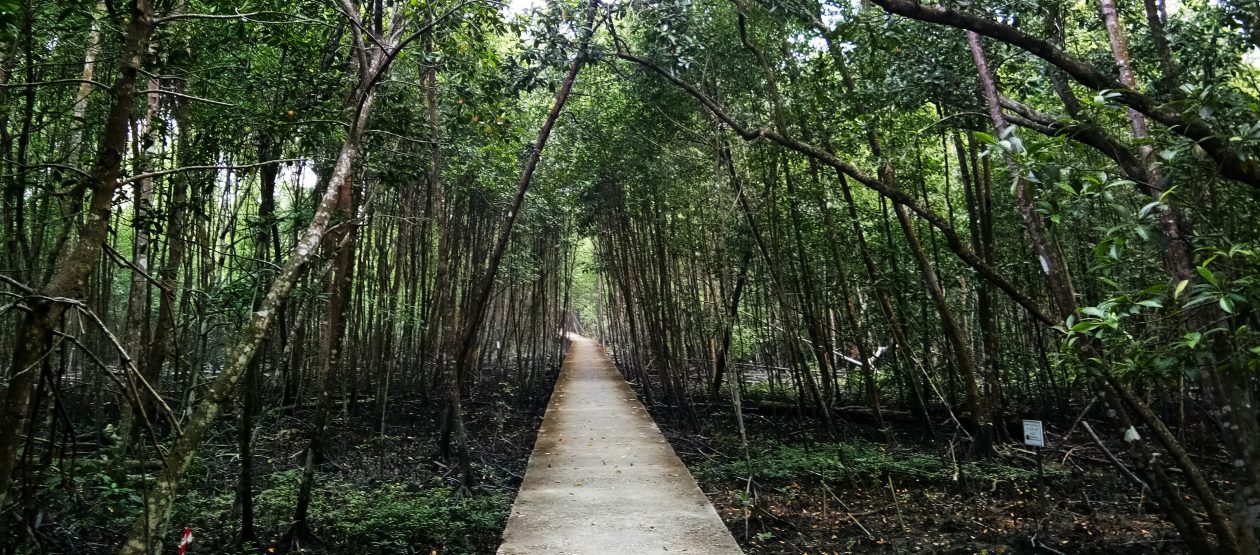CLICK BELOW FOR AUDIO GUIDE
Bruguiera parviflora is a tree in the family Rhizophoraceae. Lenggadai is commonly found closer to the landward or the bund border of the mangrove. This tree can grow to a height of 30m, has a grey smooth bark with lighter blotches.
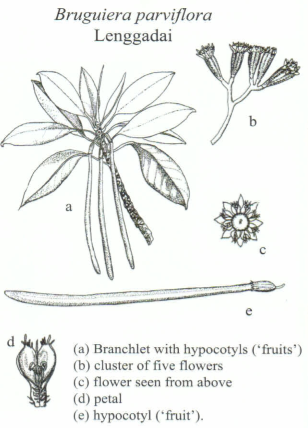
The base of the tree has buttresses with roots radiating from the tree loop above and below ground forming knee roots. These knee roots have lenticels which allow gaseous exchange in the oxygen-poor and often waterlogged soil. The roots spread over a wide area to help stabilise the tree on the unstable ground. This tree relies on its roots to exclude salt from entering the plant through a process called ultrafiltration.
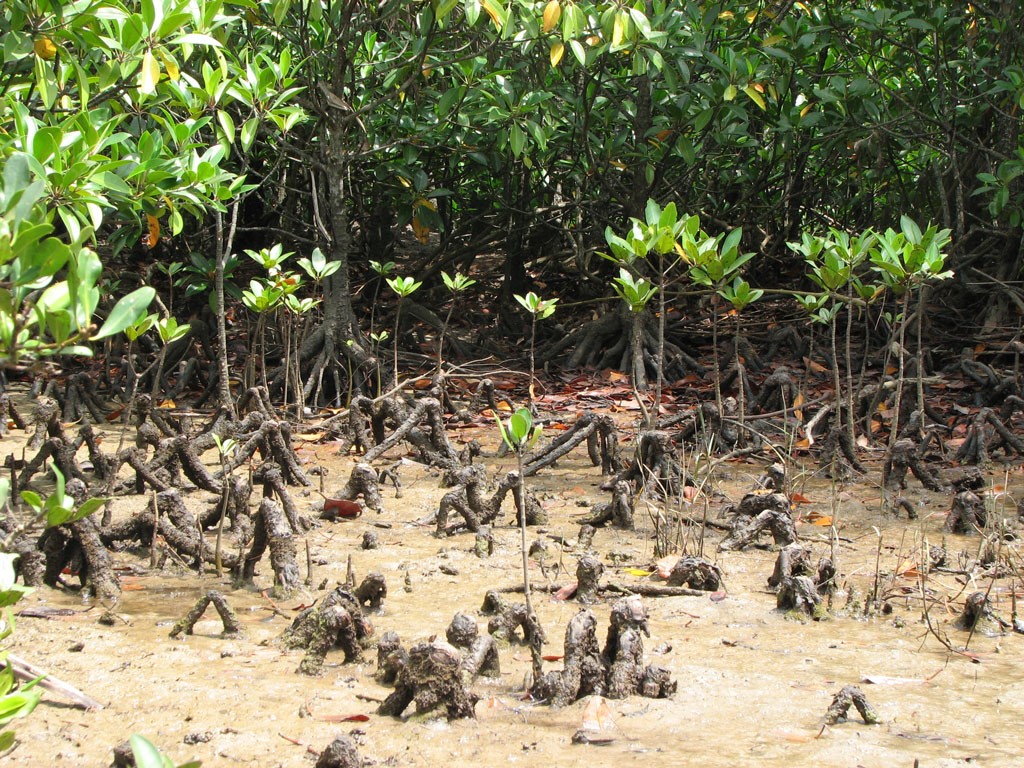
The twigs are green with reddish-brown scars. The elliptical, yellowish green leaves are in opposite pairs at right angles to each other.
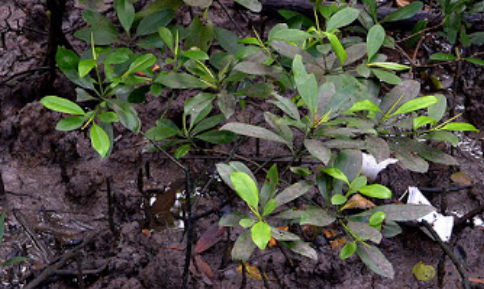
The flowers are in groups of 2-5 per leaf angle with yellow-green sepals that remain pointing parallel to the long axis of the fruit.
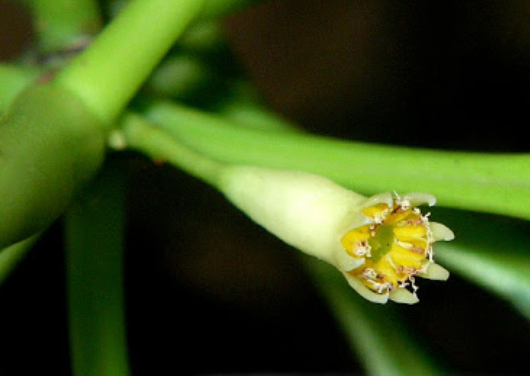
The fruit pods are smooth cylinders with a pencil-like shape up to 13cm long. The seed germinates within the fruit. Vivipary is observed in this plant whereby the embryo grows and break through the seed coat and the fruit wall while still attached to the parent plant. Hence, the thin and long structures seen hanging from the trees are the seedlings, not fruits.
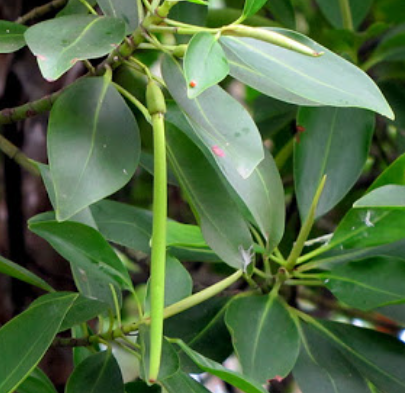
The seedling is dispersed by water. It floats horizontally for a few weeks, during which the root (lower part) will absorb water and become heavier, eventually causing the seedling to tip and float vertically. As the tide goes down, the vertically-oriented seedling will sink into the mud or other suitable substrates. Most of the seedlings, however, end up being washed ashore or eaten by animals. As the seedlings are thin and long, many of them also ended up settling directly under the parent tree, as they drop and poke into the soil below.
The wood from this tree produces good charcoal and pulp. It is usually used as firewood or for mining and making fishing-stakes. The germinating seedling is sometimes eaten as a vegetable. This species is endangered.
